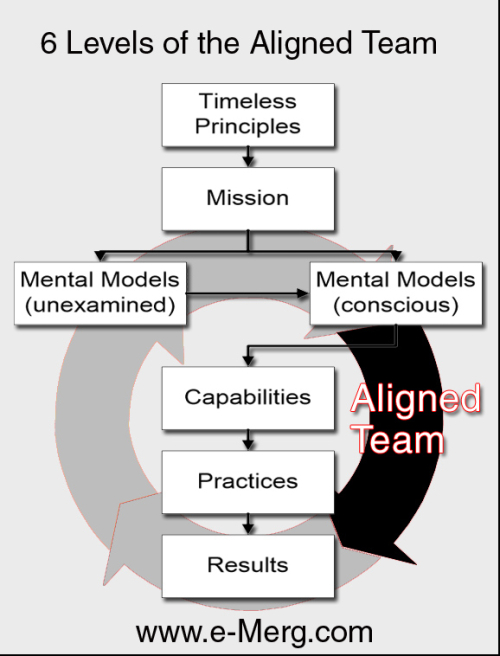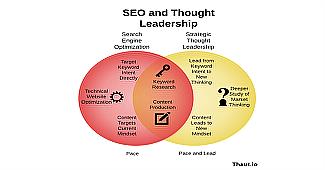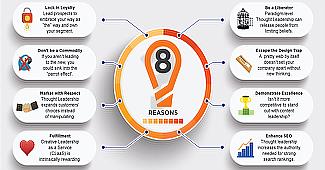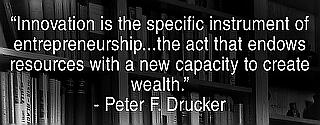"Alignment is a necessary condition before empowering individuals..." Peter M. Senge
It's nice to be near the ocean, but Charleston, South Carolina, is as flat as a pancake, so I have to escape to the mountains regularly. Looking down on vast misty valleys and shimmering lakes from a trail in the Pisgah National Forest awakens a certain feeling of inspiration. Maybe it's my Scottish Highlands blood.
It's more fun to get out of the comfort zone of the trails I know and explore the unfamiliar, so I might get a trail map from the outdoor shop in Brevard, North Carolina.
A hiking guide shows where to find good trails and the general nature of each hike, but it's nothing like smelling the trees, hearing the wind whistling through the trees and wondering if it's a bear with those heavy footsteps in the bushes.
Regardless, it helps create a great trip, whether for an overview of a general area to explore or to plan more specific point-to-point experiences.
A map can also help motivate a team to grow a company by leading customers to great experiences. The 6 Levels of the Aligned Team (6LAT) model is such a model. It isn't a substitute for direct experience any more than the hiking guide is, but it can similarly help create a great journey by charting a course.
“Experience by itself teaches nothing... Without theory, experience has no meaning. Without theory, one has no questions to ask. Hence, without theory, there is no learning.” ― W. Edwards Deming

------------------
The 6 Levels of the Aligned Team model (6LAT) is a hierarchical model of creating congruent high level results in a business. The levels, from top to bottom, are
- Timeless Principles
- Mission
- Mental Models
- Capabilities
- Practices
- Results
Distinct strategies address each level to bring an organization into alignment. A misaligned level will affect all the levels beneath it. If the conductor of a symphony has a seizure, it doesn't matter whether or not the second seat violin is out of tune. And positive changes at a higher level can wash down the levels below like a waterfall after a heavy rain.
An aligned team in a business works together more congruently with a common mission and values that answer the "why" behind the goals. Energy that could have been wasted on internal friction like an engine running with no oil can be recovered and focused on serving customers at a higher level.
Tony Robbins speaks of how congruent people naturally radiate because they are living in accordance with their values and dreams. Similarly, companies that are congruent through alignment radiate specialness. An aligned team works together with not only shared goals, but also the deeper rapport and congruence that comes from shared mission, values, and beliefs.
------------------
"Integrity is congruence between what you know, what you profess, and what you do." Nathaniel Branden
------------------
To get an overview of the 6LAT map, let's take a brief journey through the levels, starting at the top:
Timeless Principles
Timeless principles are expressions of immutable archetypal forces. They can be variations on this set of nine:
- Empathy
- Innovation
- Discipline
- Abundance
- Competitiveness
- Leadership
- Harmony
- Communication
- Imagination
Aligning an organization with values like these chosen collaboratively with the team helps the organization flow with the river of life instead of swimming upstream. Which principles are behind your ideal of excellent service to your customers? Do your people see how their highest internal values align with those of the company?
Mission
The mission tells how the organization distinctively expresses timeless principles by enriching the lives of its customers. Making money itself is not a compelling mission because it is inwardly directed as opposed to outwardly directed. Just focus on that and you'll make less money because people can smell they are being used for another's end. On the other hand, people are likely to willingly give the energy exchange of money to a business that is focused on helping them. What's the highest calling behind what your company does?
Mental Models - from Unexamined to Conscious
Mental Models can also be known as "belief systems" but in this context I prefer the more malleable connotations of the term "Mental Models." What are the assumptions, the presuppositions behind how your company does things? Shifting a mental model can be a powerful leverage point for breakthrough growth. The challenge is uprooting these assumptions and bringing them to light so you and your team can ask questions like "how else can we think about this?"
Capabilities
What skill sets do your people need to fulfill the mission? What digital resources does your company need to stretch the mission fulfillment? Should there not be ongoing training and education programs? Where will stretching capabilities in any of these areas enhance the special benefits offered to your customers? Is continuous improvement a guiding principle for your organization?
Practices
What are the processes that drive the business? Are they documented so they can serve as a baseline for ongoing improvement? How do shifts in principle orientation, mission, mental models, and capabilities suggest the need to evolve these practices or replace them with new ones entirely?
"If you can't describe what you are doing as a process, you don't know what you're doing." - W. Edwards Deming
Results
The natural outcome of getting alignment through these levels is measurably improved and more harmoniously obtained results. Instead of pulling and pushing people with the carrot and stick, this flow helps evolve performance, which is driven by the intrinsic motivation stemming from your team's personal values and mission aligning with that of the company.
------------------
A performance by a great jazz improvisational group can illustrate the levels. Their common mission of deeply moving creative expression is guided by principles like creativity, excellence, and spontaneity. The musicians share common mental models like the 12 note scale and various rhythmic patterns. They have refined their capabilities of utilizing those models with dedicated practice on the instruments. They apply the capabilities in the process of creating great music in the moment. One result is likely to be an appreciative audience.
Peak performance in such a system comes from the harmony and collaboration between the high-performing players so the whole becomes greater than the sum of its parts. The music is enriched by how they listen and respond to each other.
------------------
Defining these things sets up a roadmap that becomes alive with an ongoing implementation strategy. What feedback loops best reinforce the values and mission of the organization? How can leadership align with these visibly and how can people use them for decision making? How will feedback correct course if and when people stray from these principles? Is management brave enough to sacrifice an easy short term result for a principle?
------------------
Sources/More Reading
Peter Senge, The 5th Discipline
Sue Knight, NLP at Work: The Essence of Excellence
In an interview, Charles Garfield, author of Peak Performance and Peak Performers, said "The mission of the individual needs to align with the mission of the team, which needs to align with the mission of the organization. In fact, I would take it further -- the mission of the organization needs to align with the mission of the society in which it is embedded and the mission of the planet to which we are all indebted."
The Aligned Team model is derived in part from the neurological levels model of Robert Dilts, who wrote in a Brief History of Neurological Levels, "Our brain structure, language, and social systems form natural hierarchies or levels of processes....The concept of logical levels of learning and change was initially formulated as a mechanism in the behavioral sciences by anthropologist Gregory Bateson, based on the work of Bertrand Russell in logic and mathematics."
Written by Chris McNeil
Founder of Thaut and 5th Level Web

10 Reasons Your 2025 Content Marketing Strategy Needs Strategic Thought Leadership
Strategic Thought Leadership offers a robust Content Marketing Strategy that can move the mind of a marketplace.

2 Key Areas Where Thought Leadership Enhances SEO
Thought Leadership Marketing can boost SEO with new audiences adding new keywords thus more traffic as well as better search results through enhanced engagement metrics. And the high authority content naturally attracts inbound links as a bonus.

Information is Not Insight
What happens when we take our marketing technology to the customer point of view?

The LEO Model of Thought Leadership
With Thauts on making movies, theme parks, creativity, and Walt Disney's Imagineering... and how they apply to marketing

Marketing Tech-2022 - 3 Trends Shaping Marketing AI
Three trends are shaping how Artificial Intelligence is perceived and used in marketing. More responsiveness to the end customer and a role for AI that better supports human creativity will result.

infographic 8 Reasons Why Your Marketing Needs Thought Leadership
8 Reasons Why Your Marketing Needs it: Lock in Loyalty, Avoid being a Commodity, Market with Respect, Fulfillment of Creative Leadership, Be a Liberator, Escape the Design Trap, Demonstrate Excellence, Enhance SEO

Easy 4 Ingredient Recipe to Staying in the Zone
The flow state, sometimes known as the "zone," is a state of peak performance treasured by athletes, artists, and high performing businesspeople. Fields like Sports Psychology and NLP study this “peak performance” state in order to help people create it more consistently and utilize it for higher achievement

Thought Leadership FAQs
FAQs about Thought Leadership

43 Innovation Quotes to Inspire Your Next Idea
“Innovation is the specific instrument of entrepreneurship...the act that endows resources with a new capacity to create wealth.” - Peter F. Drucker

The 6 Levels of the Aligned Team
Introduction to The 6 Levels of the Aligned Team - Creating a Congruent Peak Performance Company

5 Powerful Applications for NLP in Business
Do you value excellence in business? One definition of NLP (Neuro Linguistic Programming) is the study and replication of excellence. As such, it has many applications in the business arena.

Five Levels Up to an Experience Centered Company
When I opened my first iPhone box, I was delighted. Here was a package that didn't require a knife or scissors to rip apart. Instead, it demonstrated deeper levels of thoughtful design by gently unfolding to a neatly designed interior. The shapes pleased my eyes.

4 Ways to Get Focus in the Age of Distraction
In today's world, the ability to consciously create focus is a tremendous strategic advantage. If you master that, you are a shark amongst minnows, a crocodile amongst turtles.

The 5 Reasons I Started a Mastermind
Sometimes, incremental progress will do the trick. Other times, only a breakthrough will do.

Two Ways to Market from Glass Houses
We are Marketing from Glass Houses




